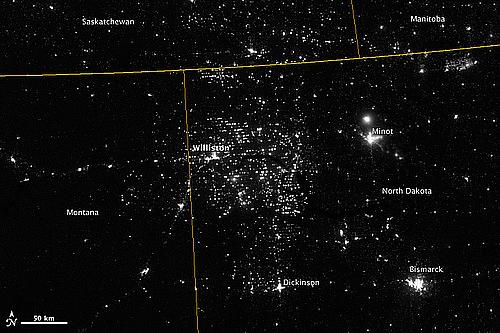Reporter Chronicles Western North Dakota Oil Boom's Impact on Local Health Care System

Late last month, John Eligon of the New York Times reported on how the oil boom in western North Dakota is placing tremendous strain on the region’s health care system.
This was not your average rural-doctor-shortage story. What caught my eye about this piece is that the region’s huge influx of uninsured patients working high-risk jobs, and increasing hospital debt, largely due to unpaid bills, have been caused by a unique condition.
The situation, “seems like it’s unique to North Dakota, because it’s experiencing the most rapid growth in the country right now,” Eligon told me in a phone interview this week.
Eligon, who covers six Midwestern states for the Times, told me he first learned about the oil boom’s impact on rural medical facilities through a report on the Daily Yonder, a website focusing on rural America. But on the day he visited McKenzie County Hospital in Watford City, North Dakota, it was relatively quiet.
So instead of opening his story with patient anecdotes, he led with the facts: How many more patients were visiting the hospitals, and how much the hospitals’ debt is rising. “Those were the numbers that stuck out to me the most,” he said. “They spoke for themselves.”
The figures he collected are truly eye-popping. He wrote:
Largely because of unpaid bills, the hospital’s debt has climbed more than 2,000 percent over the past four years to $1.2 million … Just three years ago, the hospital averaged 100 emergency room visits per month; last year, that average shot up to 400.
Over all, ambulance calls in the region increased by about 59 percent from 2006 to 2011 … The number of traumatic injuries reported in the oil patch increased 200 percent from 2007 through the first half of last year ….
Going beyond the numbers, Eligon’s descriptions of the region’s fast growth, and its impact on the health care system, also captured my imagination. He interviewed a veteran paramedic who recalled searching for about 15 minutes for the location he had been dispatched to, to treat a man who had hurt his back falling off a piece of equipment.
In the past, “all the volunteers, they didn’t go by street signs,” the paramedic told Eligon. “It was like, ‘The corner store, third house to the north of that.’ So now, if you give them ‘62nd Avenue,’ they go, ‘Where’s that at?’”
Eligon also interviewed McKenzie County Hospital’s only full-time physician, who works in a 60-year-old, one-story brick building with one room for emergencies.
“My work is no longer small-town work,” Dr. Gary Ramage told Eligon. “My work has now been transformed from that of a small family practitioner to basically an E.R. doc.”
Eligon was my editor at the Daily Northwestern several moons ago, so I asked him for some reporting tips. He said he would have liked to have spent more time in the medical facilities, to get a true sense of their frenzied pace. “I wish I would have been able to see the magnitude of how busy it gets,” he said.
Eligon includes the description of at least one patient - a man who was treated by McKenzie County Hospital’s only full-time physician for a spider bite, which had likely nested under the man’s trailer. But he said he would have liked to have spoken with more patients, to gain their perspectives on the dangers they see for themselves.
Finally, I asked him what it’s like to report from North Dakota. (He also wrote this fascinating story, ‘An Oil Town Where Men are Many, and Women are Hounded.’) He said he wouldn’t choose to live there, but the interesting people and stories definitely make it worth the trip.
Image by NASA Goddard via Flickr

